The Greatest Guitarists of All Time: The Sound and Gear of Kirk Hammett
What Makes the Greatest Guitarists Sound?
If you learned to play guitar in the early 2000s and didn’t try to play a Metallica solo at least once, were you really a guitarist at all? For me, Kirk Hammett was and is one of the great guitar heroes. Kirk may not be the most technically adept guitarist, but he has an unmistakable style and a sense of the big picture. In this article, we take an in-depth look at the sound and gear of Kirk Hammett: guitars, amps, effects, and playing style. And, of course, we explain how you can recreate his sound with a little creativity (and wah).
All About The Sound and Gear of Kirk Hammett
Gear of Kirk Hammett: Guitars – Horror Meets High Gain
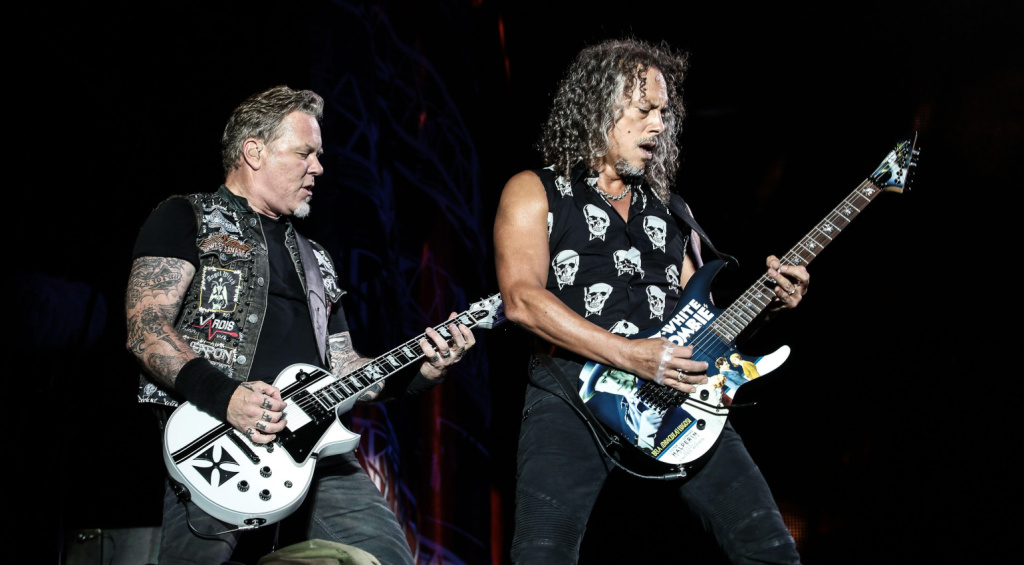
Kirk Hammett’s guitars are not just instruments, they are characters in an elaborate show. Each has its own story, design, vibe and era within the Metallica cosmos. Kirk’s penchant for unusual looks – somewhere between horror movies, comic books and occult mysticism – is evident in many of the signature guitars he has designed with ESP Guitars.
Kirk Hammett’s guitars are not limited to one model: although the KH-2 is still a superstrat long-runner, other iconic guitars can also be found: White Zombie, Ouija or the legendary “Greeny” Les Paul, just to name a few. If you take a closer look at the gear of Kirk Hammett, you can see what musical chapter he is in right now.

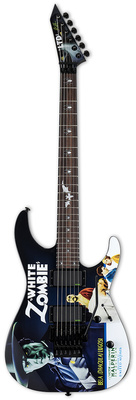


ESP KH-2 – Kirk’s workhorse since the 1980’s
The KH-2 is something of a musical all-purpose weapon among Kirk Hammett’s guitars. Simple, effective, reliable – and yet distinctive. It is based on a modified ESP M-II with a 25.5″ scale, a thin neck profile, a Floyd Rose tremolo and, of course, EMG 81/60 pickups. The famous skull inlays have long since become a trademark and are probably the most common modding request from young up-and-coming shredders.
Kirk Hammett has been using the KH-2 almost continuously live since the And Justice For All tours in the late 1980s – and it is still his first choice for many songs. The combination of aggressive response, great playability and virtually indestructible construction makes the ESP guitar ideal for Kirk’s melodic yet effect-driven live playing style.
As a bonus for fans, the KH-2 is also available as the more affordable ESP LTD KH-202 with a similar design – just for everyday use without a roadie. If you’re interested in other similar options besides signature guitars, check out my Superstrat Buyer’s Guide.




ESP Ouija – The Cult ESP in Occult Optics
Originally conceived as a limited edition fun project, the Ouija quickly became a cult object among Metallica fans – and one of the most visually striking guitars in metal history. The artwork is based on a classic Ouija board, as seen in Necromancy. It features EMG pickups, black binding and a maple neck.
Although it is not used live all the time, it appears regularly for special shows or songs with a mystical atmosphere: “The Call of Ktulu” or “The Unforgiven III” are typical candidates for a bit of Ouija magic.
Gibson Flying V – The Beginning
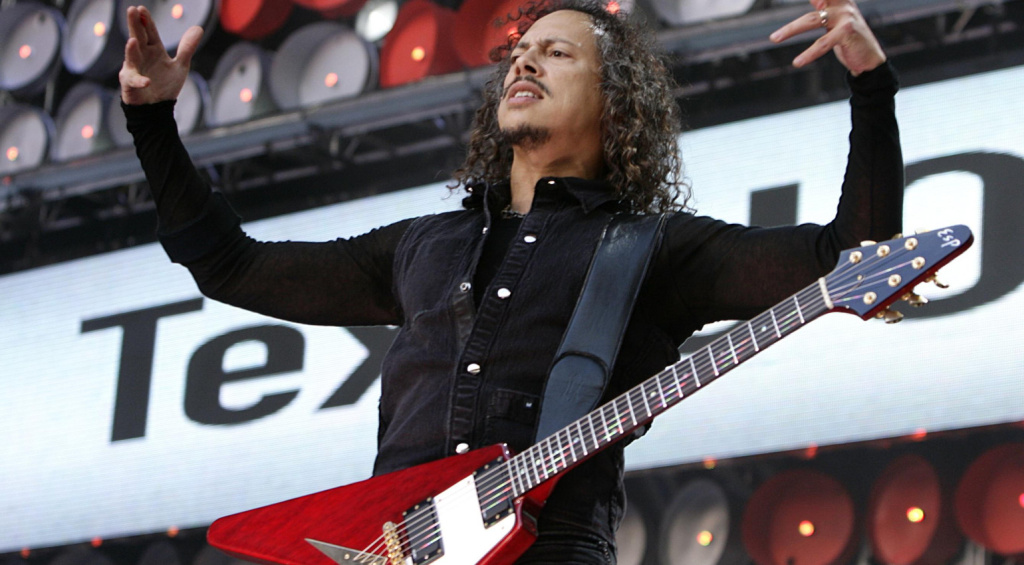
Before signature models, occult artwork, and boutique pedals, Kirk’s gear was down-to-earth: a no-frills, used 1974 Gibson Flying V. Kirk bought it in the late 1970s, when he was still scouring thrift stores for affordable gear.
The Flying V was more than a stylish statement. With its powerful humbuckers, clear attack and unfettered access to the high frets, it was perfect for the early thrash metal masterpieces of Kill ‘Em All. Visually, it was also a perfect match: aggressive, uncompromising and the perfect complement to James’ white Gibson copy.
Kirk played this guitar extensively during the Kill ‘Em All phase and even on Ride the Lightning tours. Even though he later moved on to ESP’s Flying V models, he never abandoned the V model, contributing to its mystique like few others.

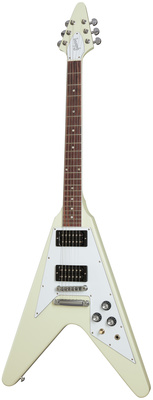

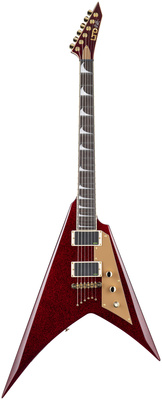
Gibson Les Paul “Greeny” – Vintage Meets Metal
This guitar is a legend. Originally played by Peter Green (Fleetwood Mac) and later by Gary Moore, it finally ended up in Kirk’s hands in 2014 – for a sum that has never been fully disclosed.
Why all the hype? Because of its history. And because of the unique sound created by the phase-reversed neck pickup: nasal, slightly hollow, but incredibly alive. If you want to know more, check out my article on legendary electric guitars (in German only)!
Kirk uses the Greeny both in the studio and live – for example on “Nothing Else Matters” or “Fade to Black”. Its warm, almost singing tone contrasts beautifully with the band’s aggressive EMG wall of sound.
And even though it might not seem like a good match for a metal guitarist, it’s a real treat to see such a celebrity live again and again. And it’s thanks in no small part to Kirk Hammett’s equipment and fame that there are several reissues and signature versions of Greeny available today!






The Gear of Kirk Hammett: Amps
If Kirk Hammett’s guitars are the face of his sound, then his amps are the heart. From the snotty thrash sound of the early K.E.A. days to the fat, warm tube sound of 72 Seasons, the gear of Kirk Hammett and amps have changed many times over the decades. Sometimes they were brutally direct, sometimes surprisingly subtle.
What is striking is that Kirk relies almost exclusively on the fascination of tube amps. No amp modelers, no digital plugins. Instead, he relies on tried-and-true classics like Mesa/Boogie and Fender, complemented by modern signature models with plenty of headroom and gain. A few examples:
Mesa/Boogie Mark IIC
The legendary Mesa/Boogie Mark IIC+ is the epitome of the classic Metallica sound for many fans, and of course one of the main gear of Kirk Hammett. In the 1980s, this amp was the band’s secret weapon-clear, defined, and with plenty of oomph. The IIC+ was instrumental in the albums Ride the Lightning, Master of Puppets and …And Justice for All.
What was unique about the band’s setup was that the gear of Kirk Hammett and James Hetfield was almost identical – they both used the IIC+ with similar settings. But Kirk’s playing style, attack and effects chain made the difference, and the sound was much broader and more balanced.
Today, the Mark IIC+ is a sought-after collector’s item. Original models sell for amounts that are hard to justify. The holy grail of thrash amps.
Mesa Triple Rectifier – Modern Metal from “Load”
The albums Load and Reload not only changed Metallica’s look, but also their sound, which became broader, more modern, and deeper. The Mesa Triple Rectifier, which Kirk added to his rig in the ’90s, was a big part of that.
The Triple Rectifier is a real gain monster and a perfect match for the gear of Kirk Hammett. Three channels, endless tubes and a frequency response that cuts the mids and boosts the lows – perfect for modern, “full sounding” guitar tracks. Kirk used it both in the studio and live – but not exclusively. That’s why it’s so hard to recreate the band’s sound.

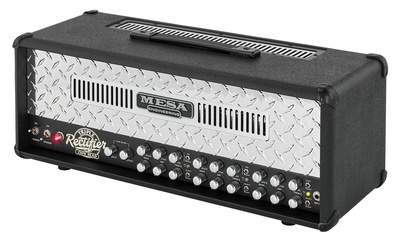
Fender Vibro-King – Kirk’s Secret Weapon
Kirk Hammett is known for his high-gain, wah-wah, and aggressive leads – but if you listen closely, you’ll hear that his clean tones are just as crucial to the Metallica sound. And for years, they’ve come from a Fender Vibro-King.
The Vibro-King is a boutique combo amp with 60 watts of tube power, a 3×10″ speaker configuration, and real spring reverb. It sounds a bit like surf rock at first – and that’s exactly Kirk’s secret sound preference: he’s an avowed fan of Dick Dale and old Fender amps. So it’s no surprise that the Vibro King is used on songs like “The Unforgiven,” “Fade to Black” and “Nothing Else Matters“.
What makes this amp so special is its dynamics. Even lightly strummed chords develop depth, presence and warmth – perfect for atmospheric intros and clean passages.
Kirk’s Playing Style – Technique, Expression and Feel

Kirk Hammett’s equipment doesn’t make him one of the best guitarists in the world. He’s neither the fastest nor the most precise player on the planet – but perhaps one of the most independent. After two or three bars, it’s usually clear who played the part.
He says his musical roots lie somewhere between Tony Iommi, Michael Schenker and Jimi Hendrix, but he owes his technique at least in part to his lessons with Joe Satriani, whom he visited regularly during Metallica’s early years.
Especially striking: Kirk’s mix of classic pentatonic runs, chromatic interjections and his almost legendary wah-wah playing. And whether you like it or not, it makes him one of the most influential guitarists of the last four decades.
Kirk Hammett as a student of Satriani
The fact that Kirk Hammett took lessons from Joe Satriani was long known only to guitar nerds – now it is a popular fun fact. Satriani describes him as a disciplined, inquisitive student with a keen musical sense.
Kirk’s solos, unlike those of his teacher, are not shredding demonstrations but mini-compositions: they build and tell a story – often similar to the vocals they accompany. Technically, he uses simple tools: the pentatonic scale, the minor scale, and occasionally a few modal accents. But it’s how he plays them that matters. With vibrato, feeling – and also with wah.
The Gear of Kirk Hammett: a Wah Pedal as His Voice
For many guitarists, the wah-wah is an effect. For Kirk, it’s a must-have. He has said many times that he “talks to the song” through the wah. And when you listen to his solos, you quickly realize that he means it.
He doesn’t use his signature pedal as a gimmick or filler, but as a dynamic tool to shape pitch, expression, and rhythm. Many of the best phrases for me come from a combination of controlled slides, bends, and precise wah playing.
Critics accuse him of relying on it too much – but that’s what made him distinctive. But I’ll be honest: I’m always happy to see new Kirk Hammett wah-wah memes. And I love the gear of Kirk Hammett!

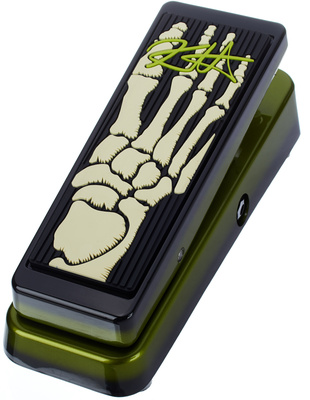
Conclusion: The Sound and the Gear of Kirk Hammett
Kirk Hammett is not the fastest, most precise, or most virtuosic guitarist. But what he has is soul. And a clear musical signature that I can recognize after three notes among all the others.
With Metallica he defined thrash. For me, Kirk has always been more than just a musician: he was my introduction to the world of guitar, a role model, a real eccentric.
Whether you play his signature wah or just play “Fade to Black” in your bedroom, Kirk has influenced generations. And I’m sure everyone reading this has tried their hand at playing parts of his songs. Fortunately.
*Please note: This article about the gear of Kirk Hammett contains advertising links that help us pay for this site. Don’t worry: the price for you will always be the same! If you buy something through these links, we’ll get a small commission. Thank you for your support!
One response to “The Greatest Guitarists of All Time: The Sound and Gear of Kirk Hammett”


 4,2 / 5,0 |
4,2 / 5,0 | 




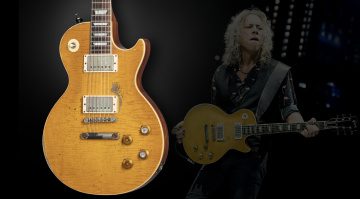

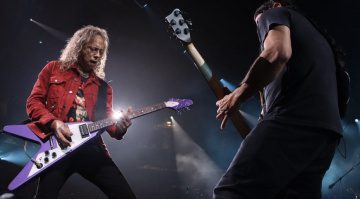
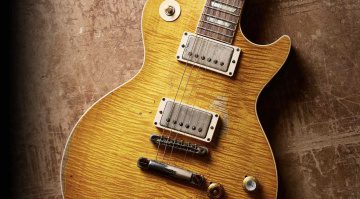

“Kirk’s solos, unlike those of his teacher, are not shredding demonstrations but mini-compositions: they build and tell a story – often similar to the vocals they accompany.”
Take your medicine and write an article after